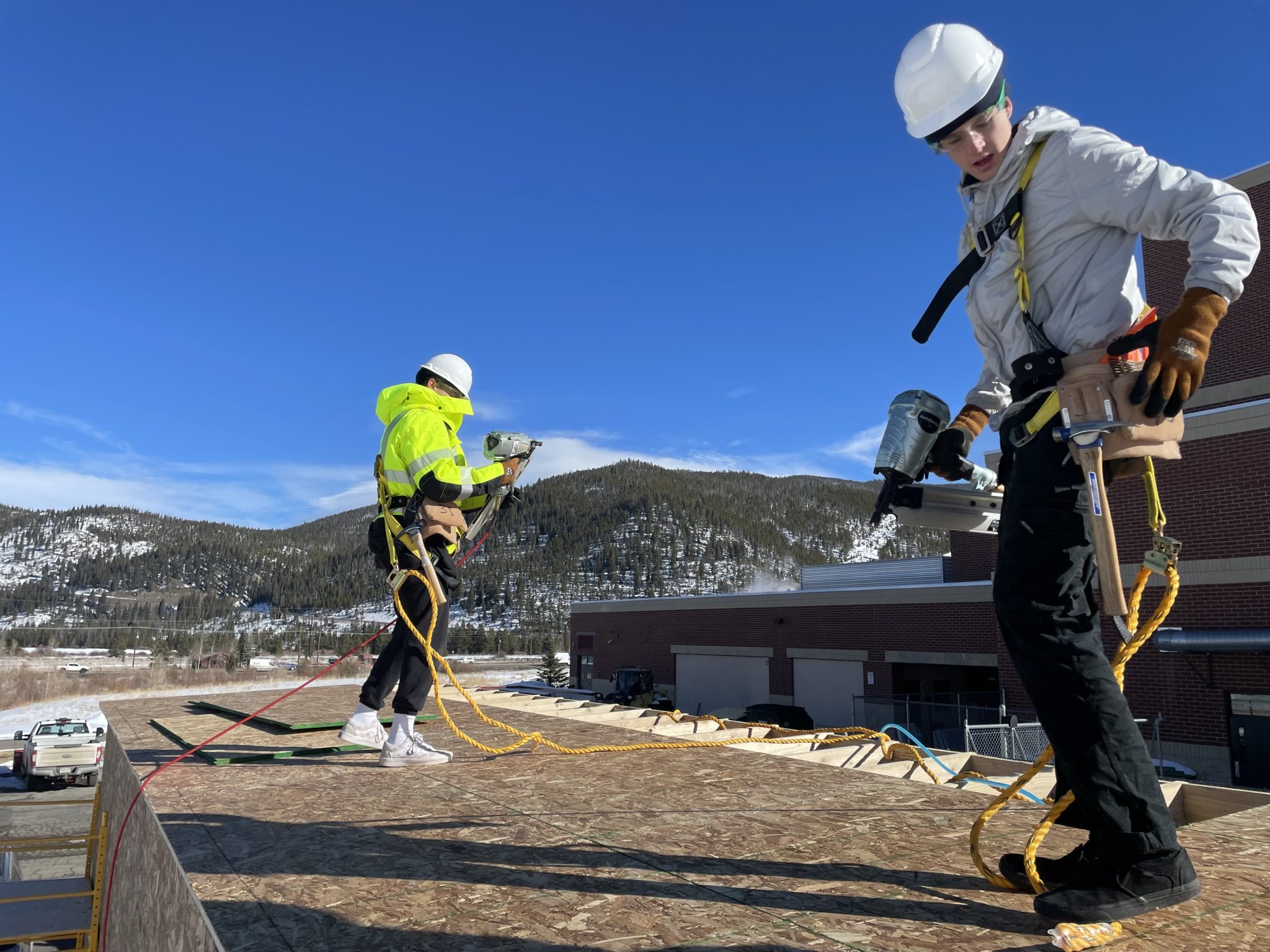It’s no longer just bird feeders and shelves. Summit High School students are building a tiny home.

In Oakley Van Oss’ construction class, a dozen Summit High School students are toiling away outside on what is perhaps the most ambitious project of their high school tenure.
Instead of bird feeders or shelves, students are assembling a 288-square-foot tiny home.
“The community knows that we need tradespeople more than anything, especially home-grown tradespeople,” Van Oss said. “They’re probably going to discover some hidden talents they didn’t know that they had.”
Just as a group effort is being employed to build the home, many hands were involved in making the project a reality.
Van Oss said the idea was brought to him at the beginning of the school year when Superintendent Tony Byrd told him about the tiny homes produced through the Educational Pathways to Innovative Careers program, an arm of the Colorado River Board of Cooperative Education Services.
The program works with school districts across Colorado’s Western Slope to provide job-ready skills to high schoolers as well as adults. When Byrd said the organization could provide Summit’s district with the materials to build its own tiny home, Van Oss responded, “Yea, of course, let’s do that.'”
From there, the Summit County Builders Association got involved, raising funds in the community to help buy equipment for the students. Once the initiative got off the ground, county residents with industry knowledge volunteered to help lead Van Oss’ class, with anywhere from four to six community members at a time working onsite with the 12 students twice a week.
Van Oss said he sees it as an investment in the trade industry’s future.
“For the community to put lots of love and support into the project, I think it makes a lot of sense all around,” he said.
For students like Wes Dennis, the class is an opportunity to get a jump start on his future.
“It shows us a lot of things that you’re going to use outside of school,” Dennis said. “That’s the great thing about this class — it’s applied learning. You could build a whole career off of just knowing how to work with wood.”
Dennis said he’s interested in a career in welding, plumbing or framing when he graduates, adding that in Van Oss’s class, “I’m getting to see if I like it or not, and I’m really liking it.”
Students are aiming to complete the 32-foot-wide, 9-foot-long, 10-foot-tall home by the end of the school year, though work may be ongoing into the summer. Once finished, the home will be returned to the Educational Pathways program, which will then sell it to a Western Slope school district to be used as employee housing.
“I think I might let out a tear of joy. I’m so excited to see this thing finished,” Dennis said. “Eventually, someone’s going to live in that … I built something good enough so someone can live there.”

While the tiny home project is new this semester, it marks the second year of the district’s careers and construction program, which seeks to support students looking to join the trade industry post-high school.
“Kids would learn about electrical one week and then learn about plumbing,” Van Oss said. “But there wasn’t really that tie that binds — that one thing that brings it all together.”
Now, there is.
The tiny home project incorporates all the skills the careers and construction program seeks to facilitate, including hands-on experience with building, eclectic and plumbing installation. Beyond the physical work, it grants students a chance to learn from industry veterans and build connections that can serve them in their careers.
“They are shoulder to shoulder working on these projects, asking questions, learning about their own choices, their own path and having meaningful conversations about the industry,” said Summit High School Co-Principal Doug Blake.

While the course is rooted in technical skills, Blake said it’s designed to engage students on an academic and personal level as well, adding, “It’s application of math skills. It’s collaboration. It’s public speaking. There’s so much that goes into it.”
Doing so helps prepare students for whatever their next path is, whether it be a four-year degree or the beginning of a career.
“We don’t want these programs to be seen as a high-school-to-workforce pipeline,” Blake said. “It’s a lot more than just taking up a hammer and beating a nail.”
Van Oss said he’s optimistic that next school year’s cohort will have their own opportunity to build a tiny home and hopes the project can become a staple of the district’s career readiness program.
“In all classes, we see growth in our kids, but sometimes it’s hard for kids to see growth in themselves,” Van Oss said.
Through the tiny home project, Van Oss said, “Everybody can see exactly what they’re learning and when they’re learning it. It’s the stuff that educators dream about.”

Published on SummitDaily.com.
